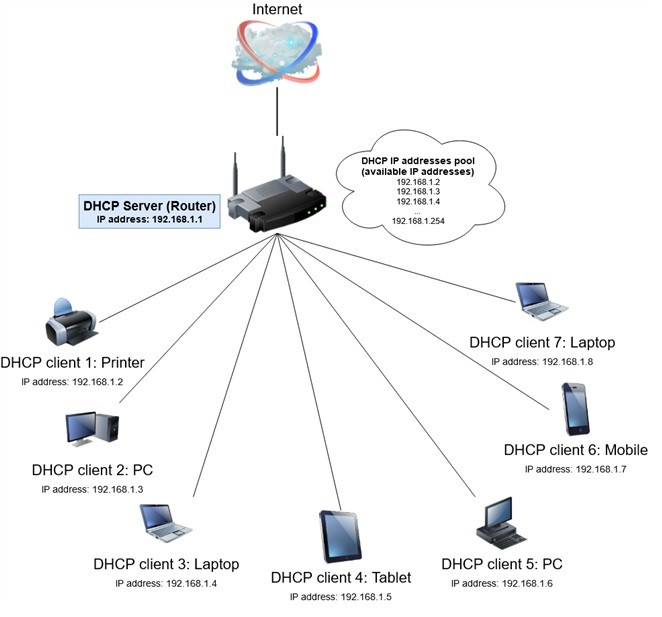IP Addresses
If a device (a PC or a printer usually) has a static IP address there is usually some way to set this on the device itself. If the device is set to get Dynamic IP address it will get this off the DHCP server on the local network. The DHCP server is usually built into the router.
When a device connects to a network it looks for something to give it a local IP address (the DHCP Server).
Below is a diagram that shows the basics of what the DHCP server does on the local network.
The router is usually 192.168.0.1 or 192.168.1.1 but the address of it can be found in Windows network connection details called the Default Gateway. If this address is typed into a web browser on any of the machines connected to the network it should bring up the login page of the router.
Dynamic is usually the best way to go as then the DHCP server will organise the IP addresses. If you use a static IP that is in the range of the IP addresses that the router gives out the device should work but unless you set the IP address that you have used is not available for the router to give out then it may be given automatically to another device on the network. On different routers there is usually a way to make a device always get the same IP address as sometimes the device will get a different IP address and may stop working.
If there is more than one DHCP server on the network (Usually 2 routers) The devices may be on different network subnets and some won't see the others.

